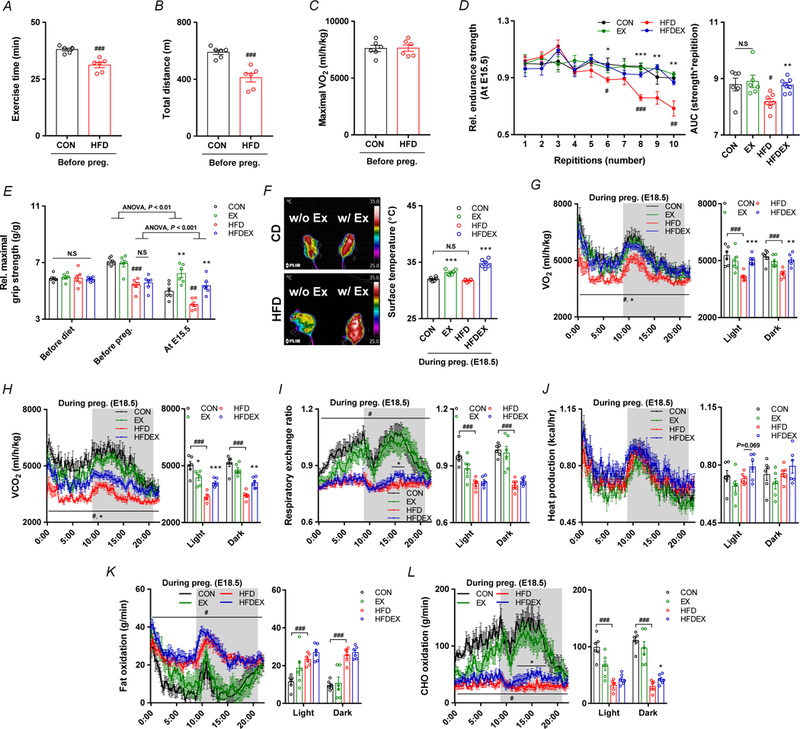Figure 3.

Maternal exercise training improves exercise capacity and energy expenditure in HFD-induced obese and pregnant mice. A-C, Maximal aerobic capacity test of female mice before mating, including exercise time (A), total distance (B), and maximal oxygen consumption levels (C). D-F, Muscle strength of maternal mice at E15.5: relative endurance grip strength (D) and forelimb grip strength (E), and representative thermogenic images (F). G-L, Metabolic parameters of maternal mice at E16.5: Time-resolved oxygen consumption (G), time-resolved carbon dioxide production (H), respiratory exchange ratio (RER) (I), Time-resolved heat production (J), time-resolved fat oxidation (K) and time-resolved carbohydrate oxidation (L); dark phase is marked as dark background; right inset depicts calculated means as indicated. Mean ± s.e.m. n = 6. *P < 0.05, **P < 0.01, and ***P < 0.001 in CON vs. EX or HFD vs. HFDEX; #P < 0.05, ##P <0.01, ###P < 0.001 in CON vs. HFD by two-tailed Student’s t-test (A-E, G-L), ANOVA with post hoc Bonferroni multiple comparison analysis (D, E).
